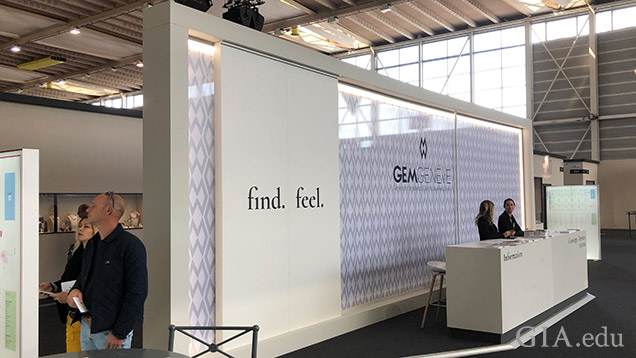Trade Hopes for a Bright 2019 Vegas Show
May 21, 2019

All eyes are on the upcoming jewelry sales events in the U.S. – the Luxury and JCK shows in Las Vegas – as business slows in other parts of the world.
Diamond dealers and jewelry manufacturers are expecting decent sales, based largely on demand this spring from diamond and gemstone wholesalers. U.S. retailers have been buying diamonds up to 1.5 ct and colored gems in the under-$1,000 range, and dealers expect this to continue in Vegas.
A strong turnout will help the middle of the diamond pipeline, which has been beleaguered by high inventories (causing prices to soften in most size and quality categories, especially at the lower end) and ever-tightening credit. Some dealers expect a larger-than-usual pre-show deal dash from those buying bargains from other exhibitors who need cash to pay bankers before the show opens. Colored stone dealers said demand has been improving for popularly priced stones that offer a distinctive look without an extremely high price tag.
Buyers attending the Las Vegas shows will likely see additional suppliers of laboratory-grown diamonds. The number of producers has expanded and demand has reportedly grown – with a number of mainstream jewelers offering them – and prices have reportedly dropped significantly since last year’s show.
Dealers base their optimism on the strong U.S. economy, but there are significant issues affecting the retail business: lack of wage growth among large numbers of consumers; competition from online sales; trends away from luxury items among younger buyers; and the decline of shopping centers, which have depressed sales to the point where some major retailers are in financial difficulty. Of the publicly traded retail jewelers, Tiffany & Co. reported that same-store sales were up 5%, while Signet Corp. (Kay, Zales, Jared, Piercing Pagoda) posted a sales decline of 2% in their most recent quarters.
China, however, continues to slow and the country’s government is trying to reduce the flow of funds out of the country as it grapples with the U.S. trade war. Dealers say the move has deterred many Chinese buyers from acquiring high-ticket luxury goods, including large diamonds and major gemstones. It is also hampering Chinese wholesalers who buy significant numbers of diamonds, gems and jewelry pieces from overseas suppliers.
In addition, Hong Kong banks are adopting stricter credit and money transfer regulations, according to traders based there. They say that these rules, coupled with the general slowdown, have caused a number of large gem companies to downsize and have forced some smaller ones out of business.
Exhibitors at the May GemGenève show, which was geared mainly toward the luxury market, found these headwinds in evidence. Few Asian buyers attended the show and demand came mostly from other dealers looking to acquire large diamonds, fancy colored diamonds and major gemstones.
Despite the slow market, dealers maintained they could afford to hold the line on prices, especially for fancy colored diamonds.
The impending closure of Australia’s Argyle mine, an important source for fancy pink diamonds, is giving dealers of these goods an added incentive to keep prices high.
“Once we sell them, we know we’ll never be able to replace them,” said one dealer, who believes it will bring a fundamental shift in the fancy colored diamond market. “In the past 15 years or so, we have seen many new people come into fancy colors, despite their rarity. But as this source disappears, a lot of these new people will have to change their business model or disappear.”
The increasing numbers of larger, fancy yellow diamonds from Russia and Canada is another worrisome trend for fancy colored diamond traders.
“These always provided a good cash flow (from retailers and consumers), which has allowed us to hold on to the really rare colors,” explained one exhibitor. “But with prices softening for the yellows, we may have to sell the rarer colors.”
Russell Shor is a senior industry analyst at GIA in Carlsbad.



